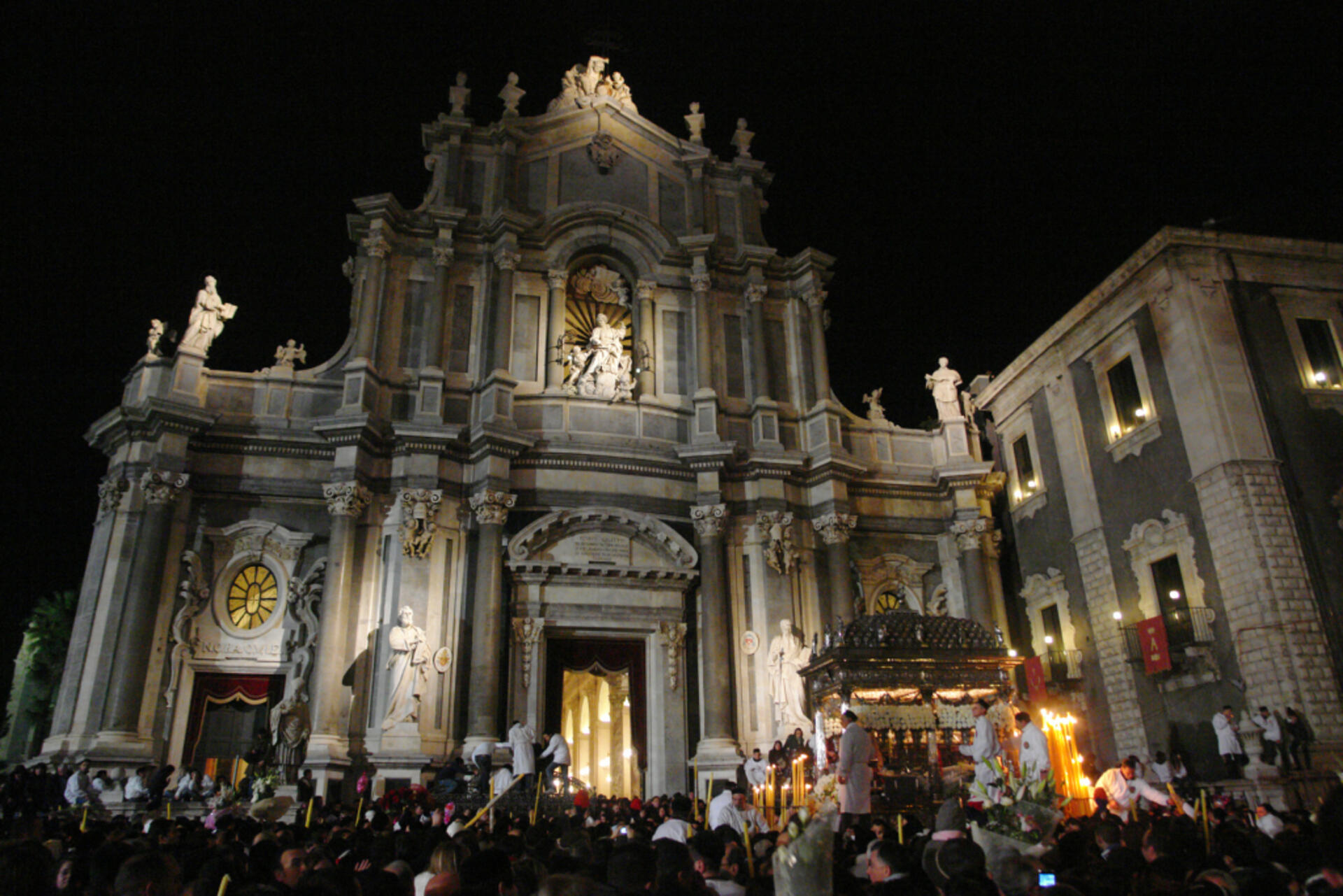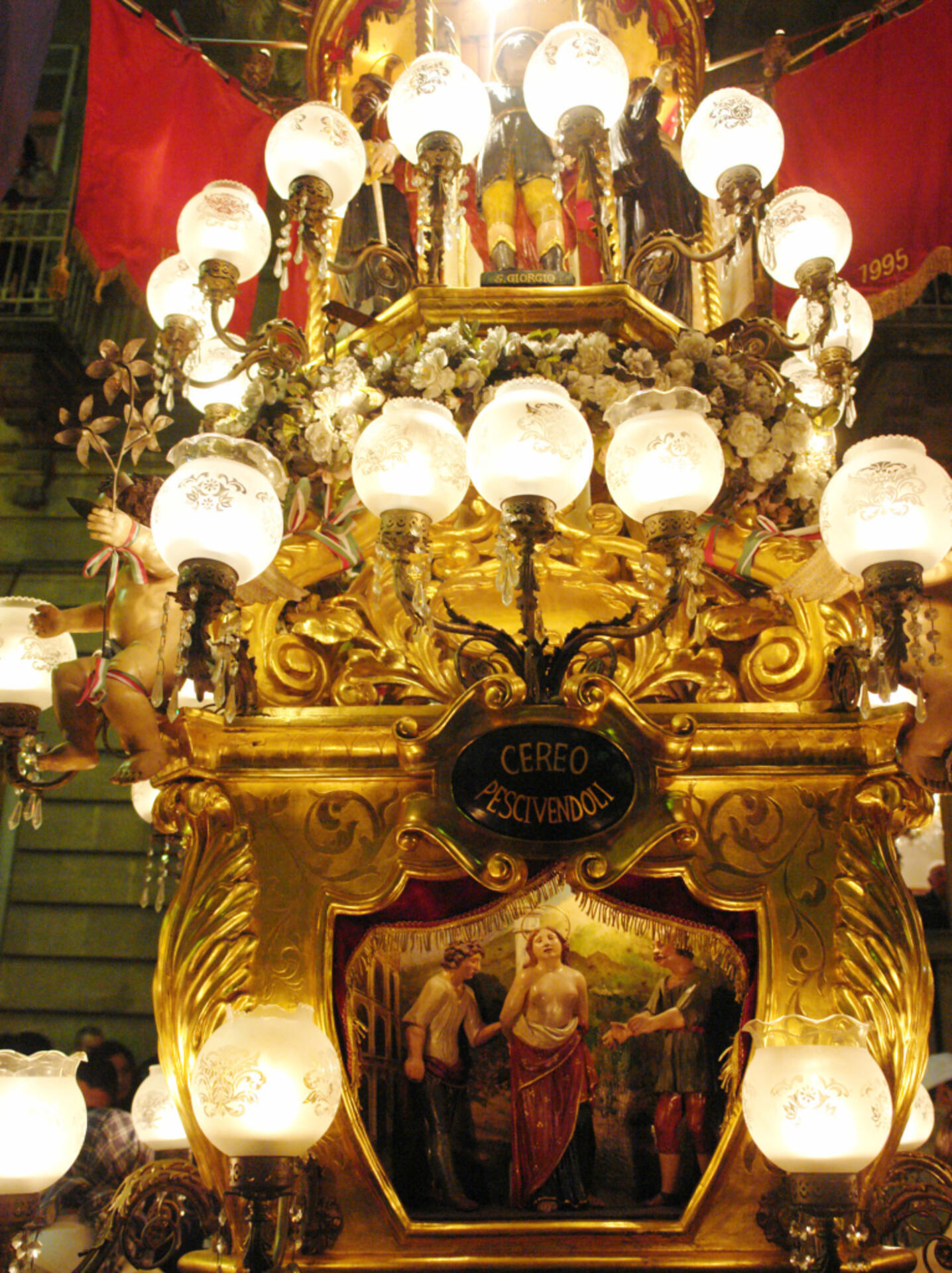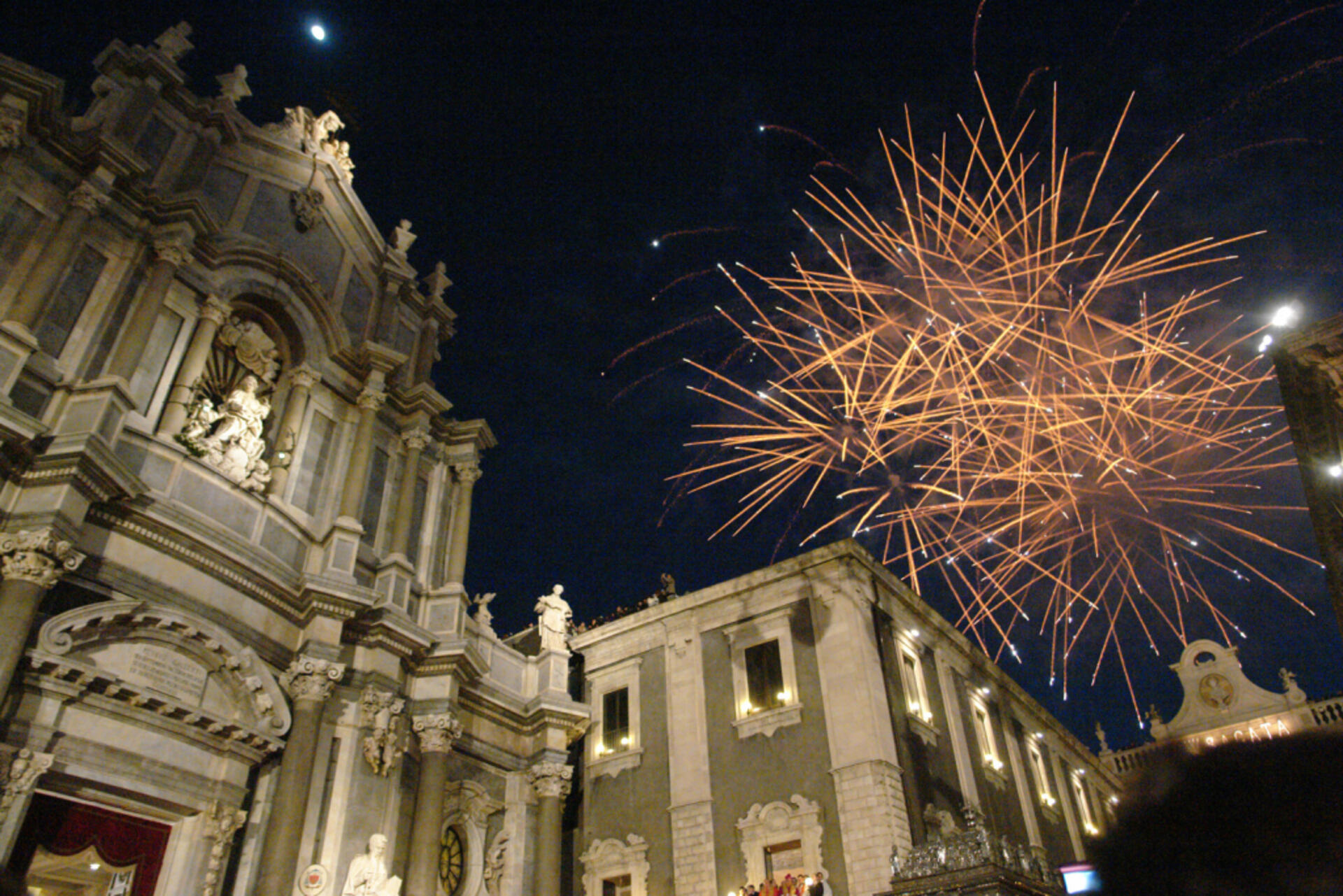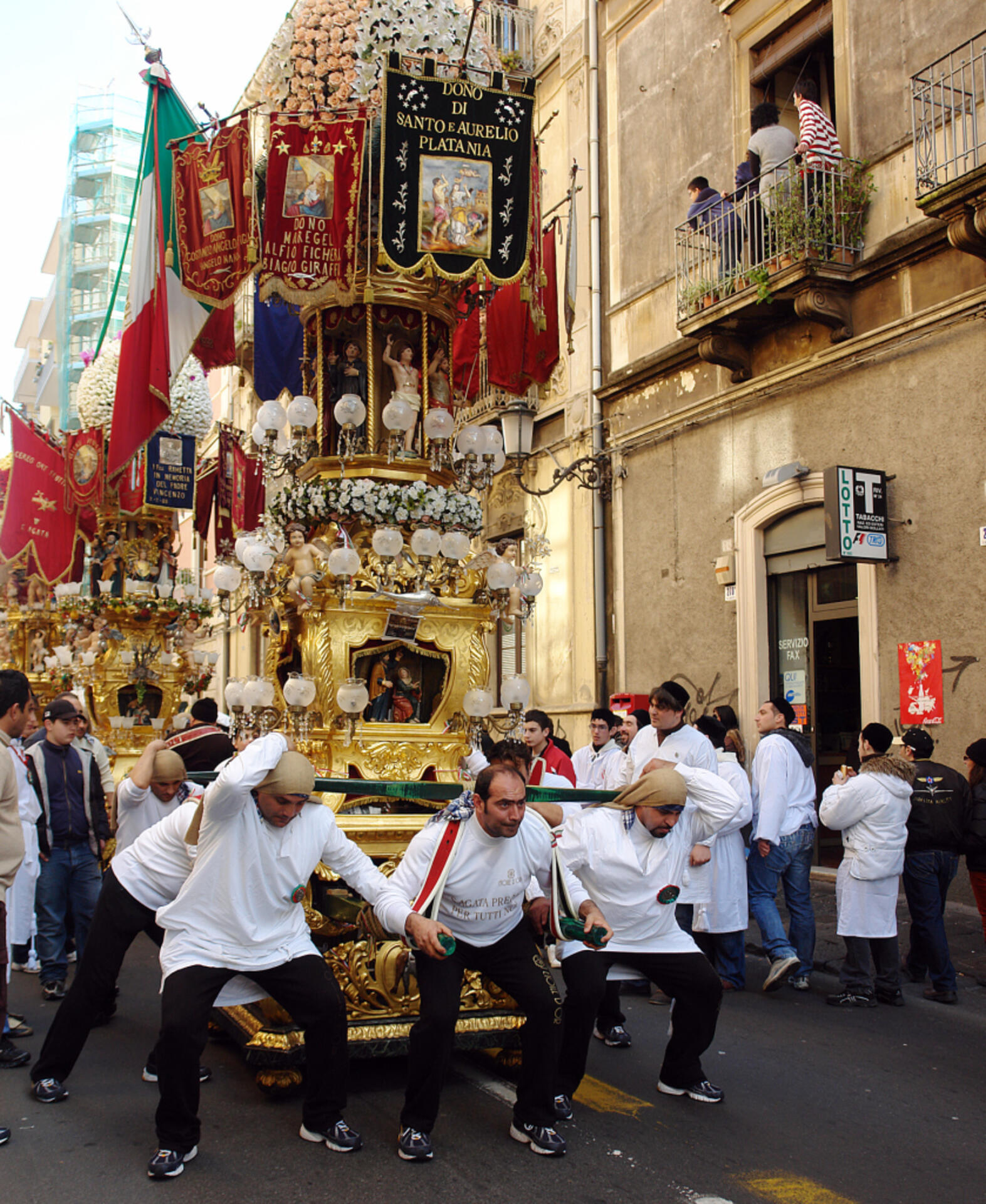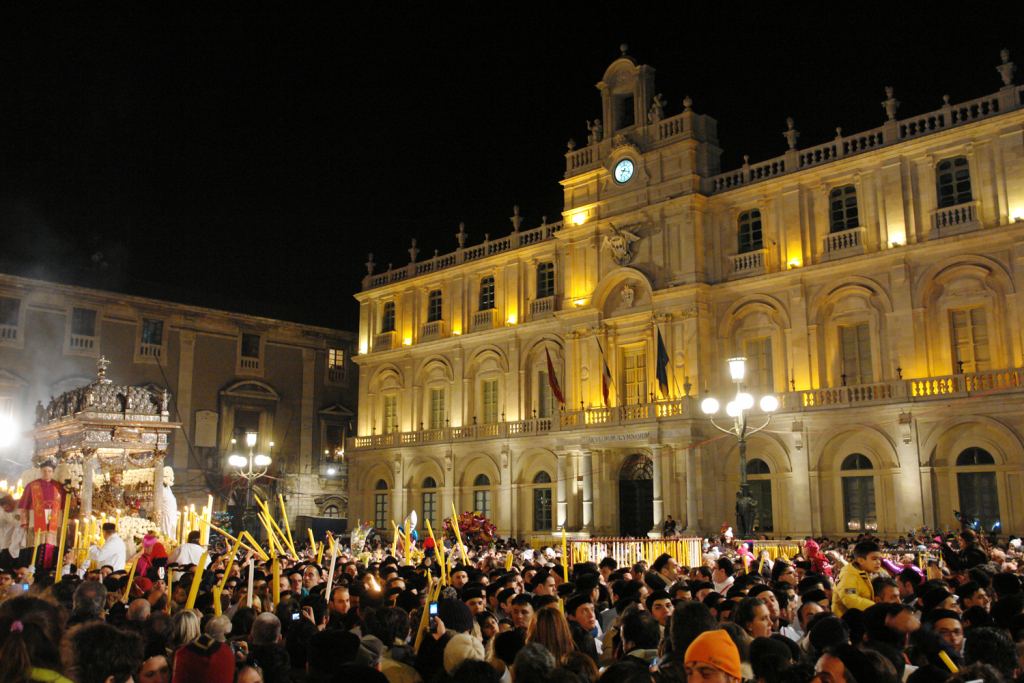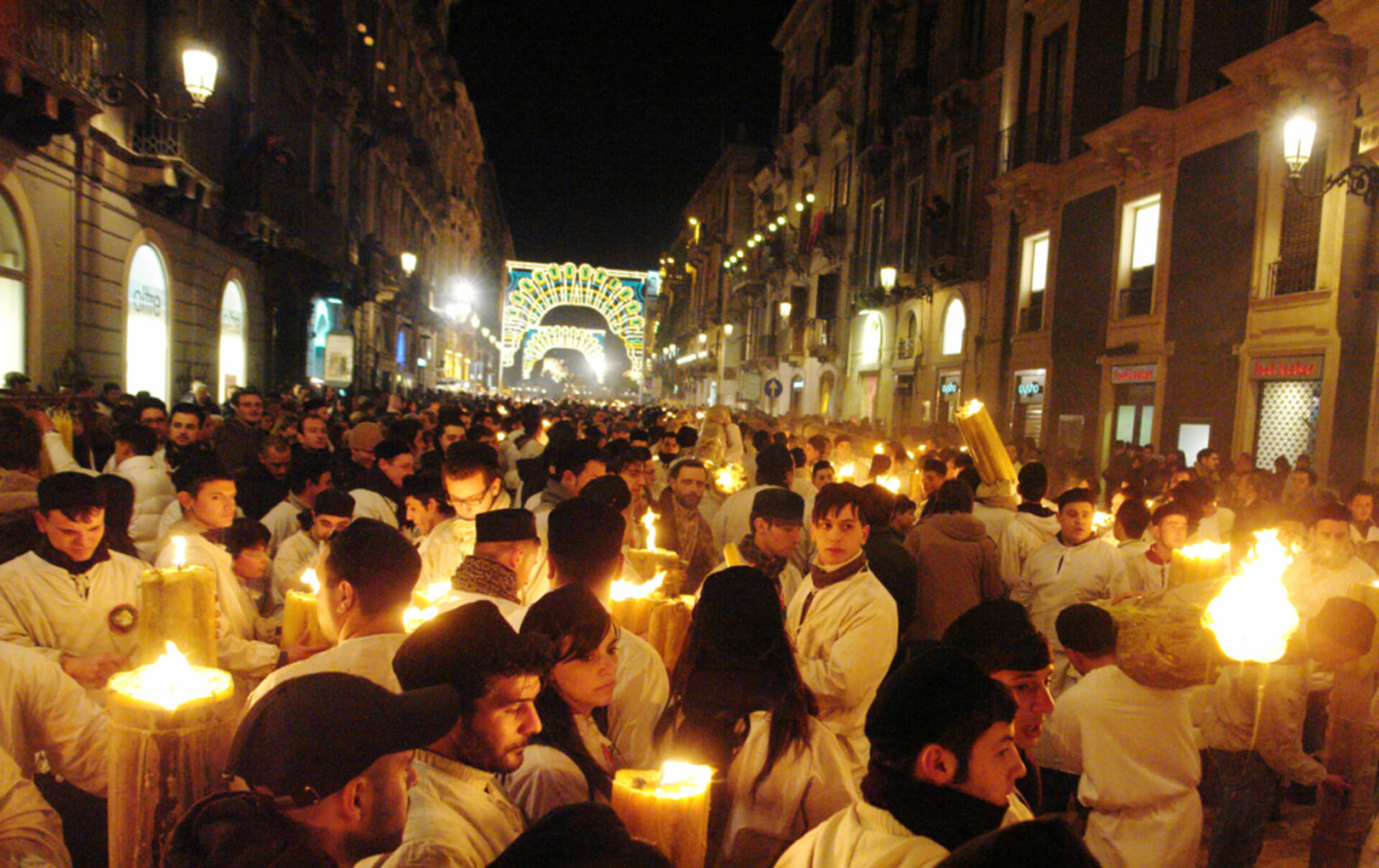Feast of Sant’Agata in Catania
Feast of Sant’Agata in Catania
For centuries, from 3rd to 5th of February every year, Catania goes through a unique experience. A whirlwind of strong emotions accompanying the three incredible days dedicated to the “Santuzza” , as the locals use to name it, that involve, every year, thousands of curious and devotees.
Eventful days full of faith, tradition and devotion, a Feast that is quite unique in the world; the only comparison can be the Holy Week in Seville, Spain, or the Corpus Domini in Cuzco, Peru.
During these three days, the whole town is abuzz for the patron Saint’s Festival, the young Agata, Virgin and Martyr from Catania, whose irresistibly attractive story, can touch every heart. The girl, a young and beautiful Christian coming from an aristocratic family, resisted the flattery of the Governor Quintianus, and struggled against any abuse of power to defend her faith and her moral integrity. But the cost of this choice were painful martyrdoms (above all the cutting off of her breast) and even her own life.
We remember her for her miracles related to Mount Etna eruptions, earthquakes and some epidemics affecting Catania. Story goes that on February 1st , 252 (Agata had died just the year before), the city was threatened by a violent eruption. The inhabitants of the nearby villages, terrified, took the veil that was wrapped around her tomb, and used it as a shield against the lava flow. The white veil suddenly turned red and stopped the eruption. It was February 5th, the day of her martyrdom anniversary.
The Festival begins on February 3rd with the long and solemn noon procession that goes from the Church of Sant’Agata alla Fornace up to the Cathedral, where the offering of the wax rite takes place. Eleven big candles, representing some local guilds, and the two Senate carriages close the procession: an eighteenth-century sedan, followed by a smaller car, carries the city administrators.
In the same evening, ‘a sira’ u tri, a spectacular fireworks show is held in Piazza Duomo.
In the early hours of February 4th, after the Messa dell’ Aurora (Dawn Holy Mass) , the bust of Saint Agata leaves the safe room inside the Cathedral where it is permanently kept. This is the most delicious climax to the crowd anticipation: people are strongly moved and, among their screams and applauses, accompanied by religious songs, the procession begins. The Saint and her relics are brought outside the ancient city walls , drawn by a silver carriage. The procession first moves towards the church of Sant’Agata alla Fornace, where her martyrdom took place, then to Sant’Agata al Carcere; there, an olive tree (right in front of the building) recalls how the virgin, escaping from the men of Quintianus, managed to feed herself thanks to its fruits. Running quickly while dragging the heavy carriage up to the “Cappuccini slope” is an ancient tradition too; in the meantime, the locals from Catania, with their traditional black skullcaps and votive white tunics, named ‘u saccu, wave a white handkerchief and invoke their Patron Saint: “Tutti devoti tutti, cittadini, viva Sant’Agata”. (Are we all devotees? locals, long live St. Agata!).” And then another fireworks show.
On February 5th is the “peak” of the feast, the most eagerly awaited day by everybody. In the afternoon, the cart leaves Piazza Duomo to tour inside the city; it advances very slowly and crossing via Etnea it moves heading piazza Università. It then moves towards piazza Stesicoro and, further, to Villa Bellini. The cart reaches Piazza Cavour – Piazza Borgo, as it is called from locals, – late at night. After a long and spectacular fireworks show, the “vara” reaches the cross between “Quattro canti” and the San Giuliano slope.
Here an exciting game of endurance of all candelore precedes “la corsa del cordone” a cord pulled by thousands of locals (if all goes well, that means a good harvest next year). The race ends at the intersection with Via Crociferi, where the charming singing of the cloistered Benedictine nuns pays homage to the Saint. Then it is almost a race back to the Cathedral, but the daylight has already become very clear. It’s an emotional time, all kind of screaming stop: you can see happiness on people faces to have been spending three intense days with their Patron, but tiredness also appears. However, with their last whisper of a voice, illuminated by the last fireworks afterglow, they still exclaim: “Cittadini, viva Sant’Agata!” (Locals, long live Sant’Agata!).
The desserts of Sant’Agata. History and legend …
Sweets and cakes related to the Virgin’s story are inevitable in any pastry shop of Catania: : the cassateddi di Sant’Aita also called minni di Sant’Aita whose shape recalls the saint’s martyrdom (she underwent the cutting off of her breast, to have rejected Quintianus’ love in favour of the Christian faith) and the olivette (small olives).
These sweet olives are related to the tradition TELLING that the young woman, while fleeing from the men of Quinziano, sheltered under an olive tree, that had miraculously come out of nowhere , and which allowed her to eat and rest.
The link existing between the inhabitants of Catania and their Patron is reflected also into the bid number of votive aedicules dedicated to her… Read more
The feast held on August 17th is perhaps the oldest one, as it is linked to the spontaneous festivities occurred on the night of 17th August 1126, when Sant’Agata’s mortal remains, stolen in 1040, arrived in Catania from Constantinople, brought by the two soldiers Gisliberto and Goselmo. Celebrations are held in a very small way, not even comparable to the grandiose February festivities … Besides the Mass in honor of Sant’Agata, a short procession takes place in the late afternoon. The chest containing the Saint’s relics parades aound the Cathedral’s area, through Via Dusmet towards Piazza San Placido and comes back to the Cathedral by crossing Via Vittorio Emanuele, while, at Catania Port an extraordinary fireworks show takes place. A pleasant peculliarity of this summer edition Festival is the fireworks show made from the roof of San Placido church.
(Sources: “S. AGATA Guida alla Festa” orazioRusso, Nino Urzì ed. 01/04; “Festa di sant’Agata” Wikipedia)
This site contains product affiliate links. We may receive a commission if you make a purchase after clicking on one of these links.




